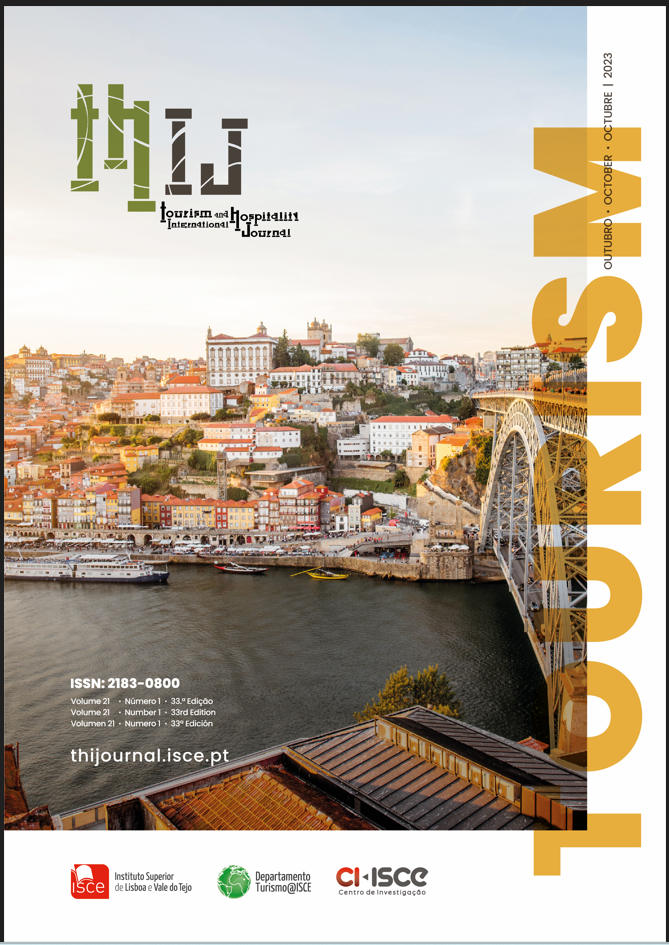The importance of river tourism. Case study: Cruises on the Douro river
DOI:
https://doi.org/10.57883/thij21(1)2023.32928Keywords:
Tourism, Sea and river cruisesAbstract
Cruises, whether sea or river, represent an important sector of tourist activity worldwide. In this work we began by evaluating the state of the art, in relation to the topic of cruises in general and river cruises in particular. We then carried out a study on the evolution of the market both globally and in relation to movements in Europe, comparing the results of 2022 with those of 2019. We finished the work by studying the results of cruises on the Douro River from 2020 to 2022.
References
Bosnic, I., & Gasic, I. (2019). River cruise Industry: Trends and Challenges. Conference Paper Economic and social development : 43nd International Scientific Conference on Economic and Social Development - "Rethinking Management in the Digital Era: Challenges from Industry 4.0 to Retail Management" : book of proceedings : Aveiro, 15-16 July 2019, 32-41. ISSN 1849-7535
CLIA (2022a). 2022 Global Market Report.
CLIA (2022b). 2022 Europe Market Report.
Jugovic, T.P., Komadina, Z. & Sirotic, M. (2020). Affirmation of Passanger Traffic Flows on yhe Danube Corridor – Perspective of River Cruise Tourism. Scientific Journal of Maritim Research 34, 111-120. https://doi.org/10.31217/p.34.1.13.
Mankowska, M. (2019). Determinants and Directions of Change in European River Cruise Market. Scientific Journals of the Maritime University of Szczecin, 2019, 59 (131) 83-91. ISSN 1733-8670 (Printed). ISSN 2392-0378 (Online). DOI: 10.17402/355.
Mirjana, K., Zekic, A. & Violic, A. (2017). Analysis os Cruise Tourism on Croatian Rivers. Nase More 64 (1) – Supplement, 27-32. DOI 10.17818/NM/2017/1.11 UDK 338.48:656.62 (497.5)
Downloads
Published
How to Cite
Issue
Section
License
Copyright (c) 2023 Carlos Vilela da Mota

This work is licensed under a Creative Commons Attribution 4.0 International License.
This work is published under the Creative Commons Attribution 4.0 International License.






